The Cessna 195 Businessliner Is a Retro Airplane with Hot Rod Looks and a Marilyn Monroe Luxury
Most aircraft produced today are built to look modern. Though it’s true that many of these modern changes are for safety and performance reasons (bubble cockpits, tricycle gear, seamless fuselages, etc.), sometimes pilots tire of this new space-age beauty and develop a hankering for some nostalgia: Radial engines, cowling bumps, small tires with big spats, you get the drift. Every inch of the Cessna 195 Businessliner embodies that nostalgia. It doesn’t scream class, it croons it accompanied by a saxophone playing softly and businessmen wearing pinstriped suits drinking dirty martinis.
The Cessna 195, or Businessliner, was developed in 1947 as Cessna’s first all-aluminum aircraft, inspired by the early C-165 and infused with the retro style and class of a Rolls-Royce. Its rounded cantilever wings support a powerful radial engine and a spacious cabin that seats five, and with an 800 mile (695 nm) range, the Businessliner quickly becomes the perfect utility plane: great for business trips, great for families, and even great on floats!
A Brief History of the Cessna 195 Businessliner
The Cessna 195 Businessliner was a new and improved incarnation of the Cessna 165 Airmaster, which was introduced to the market in the mid-to-late-1930’s. When World War II began, it became obvious that the welding and woodwork needed to build these rag-wings was no longer affordable or efficient, giving rise to an era of aluminum.
In 1947, the Cessna 195 Businessliner was introduced to the public for the low cost of $12,750 (roughly $137,250 today – about half the cost of a brand-new Cessna Skyhawk). It was produced with the intention of offering a classier, more comfortable alternative to the Beechcraft Bonanza, which was also introduced in 1947. The Bonanza was smaller, faster, more streamlined, and even cheaper than the Businessliner, but that wasn’t the point. Obviously, the Bonanza won the war in the long run (it’s never been out of production), but it perhaps never gained the dedicated cult following that the stylish and one-of-a-kind Businessliner has developed over the decades.
What About the Cessna 190 Businessliner?
The Cessna 190 and 195, which both debuted in 1947, are essentially the same plane/frame with different engines. The Cessna 190 came with a Continental W670-23 engine with 240 hp, while the Cessna 195 came with a Jacobs R-755-A2 engine with 300 hp. For most, differentiating between the two can be quite hard unless you are able to take a peek under the cowling at the engine. According to Budd Davisson, one other small difference is that the cowl bumps on the Cessna 190 are riveted in place from the inside, while on the 195, they are riveted on the outside.1
It is reported that 1,180 Cessna 190 and 195 Businessliners were built over the seven-year production run, and those that remain in the sky today are lovingly doted upon by their owners, who call the Businessliner “a real pilot’s airplane.”
General Characteristics of the Cessna 195 Businessliner
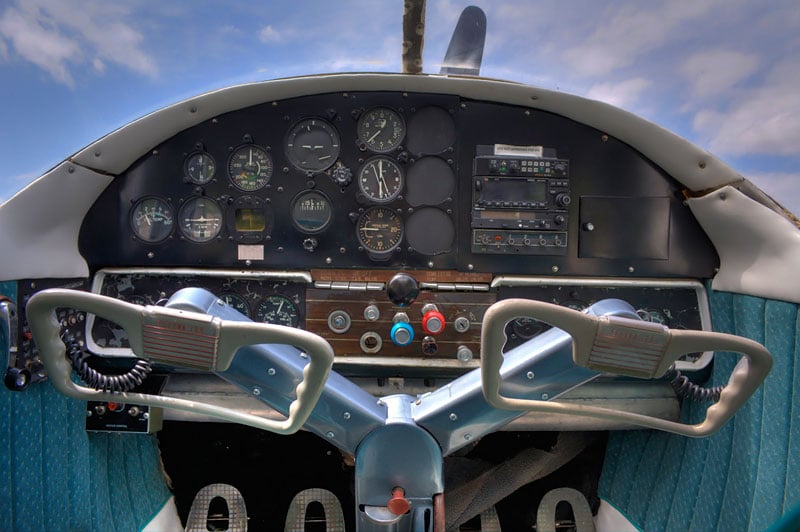
The Cessna 195 Businessliner seats five with a bench seat for three in the rear, as well as the two roomy seats for the pilot and copilot. The steering column is built into the floor in the middle of the two seats, with two yokes branching off, one for each seat. The cockpit is tastefully flavored with little touches of class, like the polished wooden trim wheel and piano key-inspired switches for flaps and lights. Though visibility over the nose and to the right are essentially null on the ground, the windshield wraps above the pilot into the wing as a sort of skylight.
Entrance into the cabin is through the one door on the left side of the fuselage. When you pull open the door, a little stair flips out for ease-of-access. The Cessna 195 Businessliner is supported on a flat sprung-steel landing gear, though some have been built with the swiveling crosswind landing gear. Though it has a useful load of around 1,300 lbs, some C-195 pilots reportedly disregarded that figure and if they could close the door, they flew.1
| Wingspan | 36 feet 2 inches (11.02 m) |
| Overall Length | 27 feet 4 inches (8.33 m) |
| Height | 7 feet 2 inch (2.18 m) |
| Wing Area | 218 sq. ft. |
| Seats | 5 |
| Doors | 1 |
| Cabin Width | 46 inches (1.17 m) |
| Cabin Height | 48 inches (1.22 m) |
| Max Gross Weight | 3,350 lbs (1,519.5 kg) |
| Empty Weight | 2,030 lbs (920.8 kg) |
| Useful Load | 1,320 lbs (598.75 kg) |
| Fuel Capacity | 82 gallons (75 useable) / 310.4 l (283.9 useable) |
Performance Specifications for the Cessna 195 Businessliner
The Cessna 195 Businessliner’s heft is pulled through the air with a standard two-blade prop powered by a Jacobs radial engine of between 245-300 horsepower (the military had a 330 HP version). The 300 HP engine is fairly common, though there is an STC available for a 350 HP upgrade. The Businessliner needs a minimum of 80 octane fuel, but there are modifications available that allow it to take MoGas.
Greg Bockelman says of his Cessna 195 Businessliner, “I flight plan 15 gallons per hour. I have an STC for mogas, so that helps. My oil consumption is about 2 quarts an hour. But a good top overhaul will fix that. I just don’t have the money to do it right now. It is a comfortable airplane for 4 people. 5 people is pushing it. It is a good going places airplane, but frankly, for putsying (sic) around the neighborhood, it is rather expensive. Part support is excellent.”2
Getting to the Root of the ‘Shaky Jake’ Reputation
Though Jacobs engines have the not-so-nice nickname “Shaky Jake,” pilots who own Businessliners claim they’re only ever shaky on startup. In a lovely article excerpt from a 1997 AOPA article by Peter A. Bedell, the author describes watching a pilot starting up a Businessliner:
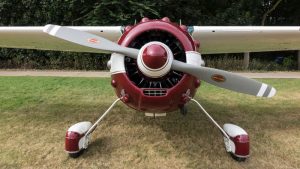
“Throughout the process, the entire airplane waddles side to side on its spring-steel gear while the seven cylinders decide whether to wake up. The sight, sound, and smell of that radial engine bellowing to life brings a little tingle to the spine. After a few seconds, the engine will settle into a slow, smooth idle. After the oil pressure is stabilized, the propeller control can be brought to low pitch (high rpm), and the pressure will noticeably drop as oil is forced into the prop hub.”3
Going back to the nickname, an article by Bill Cox published in 2008 by Plane & Pilot Magazine claims, “Leaky Jake might be a more descriptive moniker. It seems all radials leak oil, so much so that the Jacobs features a huge, five-gallon, dry sump oil tank mounted just behind the instrument panel.”4
This is corroborated by Budd Davisson, who says, “Jacobs are fine engines as long as it is understood they are going to leak — sometimes a lot, sometimes just a little. Jacobs leak oil and that’s a fact of life. Jakes are also unique in having a magneto on one side and a battery-powered, automotive-type distributor on the other. The system works great, so don’t worry.“1
Cessna 195 Businessliner with Jacobs R-755 radial engine, 300 hp5
| Engine | Jacobs R-755 radial engine, 300 hp |
| Cruise Speed (70% power) | 148 kts (170.3 mph, 274.1 km/h) |
| Max Speed | 161 kts (185.28 mph, 298.2 km/h) |
| Fuel Consumption | 14.3 gal/hr (54.13 l/hr) |
| Vso | 54 kts (62.14 mph, 100 km/h) |
| Rate of Climb | 1,200 fpm (6.1 m/s) |
| Range (at 70% power) | 695 nm (799.8 mi, 1287.1 km) |
| Service Ceiling | 18,300 feet (5,600 m) |
| Takeoff Over 50-foot Obstacle | 1,500 feet (457.2 m) |
| Landing Roll Over 50-foot Obstacle | 1,485 feet (452.6 m) |
“The C-195 is the hands-down winner for the best-looking tailwheel Cessna ever built, as well as encompassing all the finer points of utility, fun, and funkiness.” Budd Davisson1
Cessna 210 Centurion
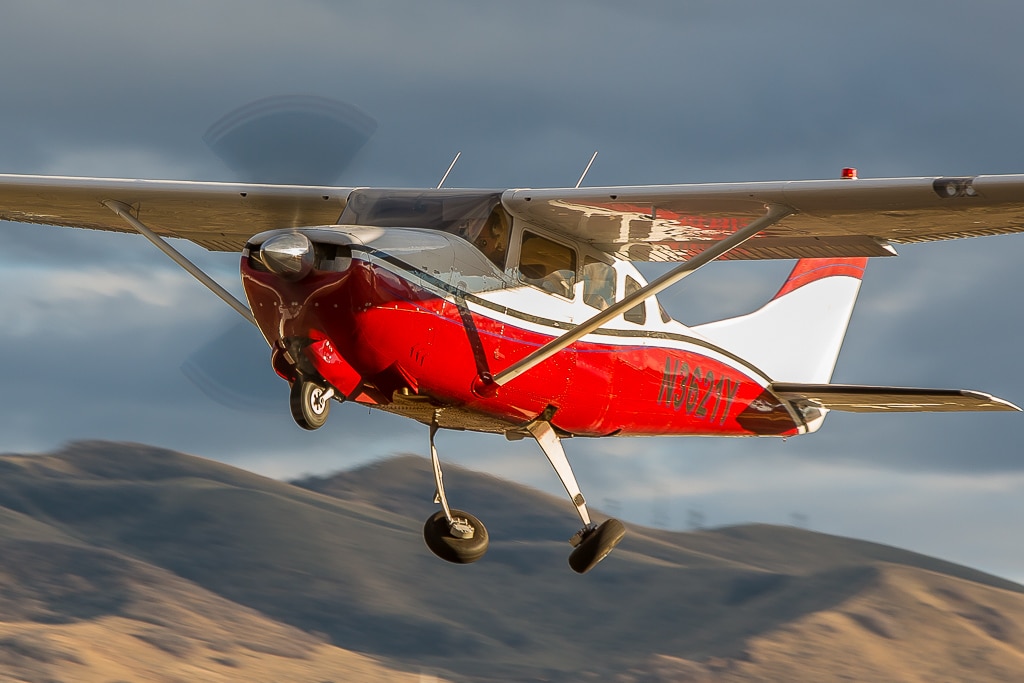 It’s like a beautiful piece of music and the Cessna 210 Centurion rivals any plane with its fluid and predictable behavior. With the exception of the Brasilia I flew at a regional airline, more time has been recorded in my logbook flying a Cessna 210 than any other aircraft. I think I have flown nearly every model year of the 210 produced and worked on nearly as many over the years. Turbocharged and normally aspirated models; they are all great airplanes. You could say that I have a connection with these aircraft and feel as though I know their heartbeat. [Click to read more…]
It’s like a beautiful piece of music and the Cessna 210 Centurion rivals any plane with its fluid and predictable behavior. With the exception of the Brasilia I flew at a regional airline, more time has been recorded in my logbook flying a Cessna 210 than any other aircraft. I think I have flown nearly every model year of the 210 produced and worked on nearly as many over the years. Turbocharged and normally aspirated models; they are all great airplanes. You could say that I have a connection with these aircraft and feel as though I know their heartbeat. [Click to read more…]
Handling the Cessna 195 Businessliner
Descents
Cessna Owner: “Descents in any radial present a challenge in that it’s important to maintain a reasonable oil temperature. The 195 is especially susceptible – the big wing resists descents, potentially seducing unwary pilots into major power reductions. Chop and drop descents, however, are out of the question in a 195. You need to plan well ahead to make certain you don’t induce shock cooling and reduce oil temperatures to dangerous levels. Precise Flight Speed Brakes would be a welcome addition for coming downhill, but sadly, they’re not approved on the 195. The only alternative is careful planning and some flaps.”6
Landing
And speaking of landing. Every pilot has heard of (or experienced) the dreaded ground loop, a not-uncommon “accident or incident” that usually results when a tailwheel airplane touches down with uncoordinated rudder control or a strong crosswind. The Businessliner’s original brakes weren’t very effective and were even more expensive to maintain, resulting in a higher-than-normal rate of ground loops due to brake failures.
According to Budd Davisson, the Businessliner is a docile airplane that only asks for one thing: that you keep it straight on landing. “The results of letting a C-195 get crossed up on landing are almost always expensive. Because the airplane is so big and the gear so flexible, a ground loop usually results in folding a gear leg, destroying a gearbox, and folding a wingtip. Fortunately, the airplane is not difficult to keep straight, but it is absolutely essential the brakes and tail-wheel steering be kept in top condition. Many aircraft have been damaged simply because the steering mechanism got worn and locked up momentarily one way or the other.”1
“No one will mistake it for a STOL machine, and it’s most emphatically not a bush bird, but it hauls a good load and can land in places that some other airplanes can’t.” Bill Cox6
Variants of the Cessna Businessliner
190: Powered by a Continental W670-23 engine with 240 HP. It was first certified on July 1, 1947, and 233 were reportedly built.3
195: Powered by a Jacobs R-755-A2 engine of 300 HP First certified on June 12, 1947.
195A: Powered by a Jacobs L-4MB (R-755-9) engine of 245 HP. First certified on January 6, 1950.
195B: Powered by a Jacobs R-755B2 engine of 275 HP and larger flaps (50% larger than earlier models). First certified on March 31, 1952.
Upgrades and Mods
Though there are countless upgrades and modifications7 available for an airplane that was produced nearly 70 years ago (Wow!), I’ll discuss what most consider the five most common and/or useful.
Floats
Few planes look as good on floats as the Cessna 195 Businessliner. Though a heavy plane, it’s got a lot of horsepower, enabling it to lift off the water and take to the skies with no problems.
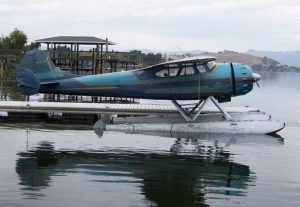
An aerial tour company in Maine has a classic Cessna 195 Businessliner on floats as part of its fleet and believes they might be the only two commercially operated in the country.
Convex Mirror
One of the cheapest and easiest modifications you can make to a Cessna 195 Businessliner is simply affixing a convex mirror over the passenger seat to help with the extremely limited visibility on the ground. According to Budd Davisson “That’s why many pilots have a convex mirror mounted above the passenger’s head to aid in watching for fuel trucks, airplanes, and buildings of less than three stories.“1
Mogas STC
A few years ago, a study was released stating that roughly 80% of general aviation aircraft can be powered by auto gas, and that includes the Cessna 195 Businessliner. As long as you get the proper equipment and find mogas with no ethanol, it’s similar enough to the 80-octane the Jacobs was built to handle. Also, it can be surprisingly inexpensive!
Crosswind Gear
Many early Cessna taildraggers had the option of crosswind landing gear (Check out this 1949 ad for Goodyear Crosswind Landing Gear), including the Cessna 195 Businessliner. However, there are some modern pilots that believe the swiveling gear causes more harm than good.
Cleveland Wheel and Brake Conversion Kit
The Goodyear brakes and tires originally installed on the Cessna 195 Businessliner’s were expensive to maintain, so many owners opted into replacing the whole kit and caboodle with a Cleveland Wheel and Brake Conversion kit, which can cost anywhere between $2,000 and $3,000, labor not included. Also, keep in mind that this conversion is not for aircraft which are equipped with the crosswind landing gear.
Purchase and Operating Cost
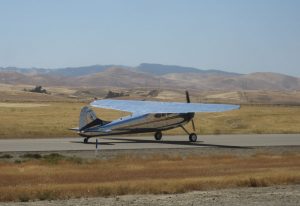
The Cessna 195 Businessliner sells for roughly $100,000 on the marketplace and has an hourly operating cost comparable to a C-185 and most other aircraft with similar horsepower. However, thanks to it being an older model, you can get away with cheaper, lower quality gas (80-octane or even mogas with the appropriate adjustments) which will bring the 12-16 gal/hour fuel burn down in cost.
Insurance costs are another story. Being a classic taildragger, insurance can cost up to 50% more8, simply because the accident and incident rates for tailwheel airplanes is much higher. The cost of maintaining a classic airplane will be higher than maintaining a 20-year-old Skyhawk, but frugality and buying any sort of classic vehicle from the 1950’s don’t tend to mesh well- whether it drives, floats, or flies.
According to an article on David Yeoman’s classic Cessna 195 Businessliner by Fred George on Aviation Week, “Owners should budget $25,000 for engine overhaul, up to $35,000 if the aircraft needs new hoses, cooling baffles, exhaust components, engine mounts, and accessories. Other parts cost about the same as those for a Cessna 185, according to Barron. In pristine condition, but without avionics upgrades, these airplanes command about $135,000 in the marketplace.”9
There’s a fair amount of well-maintained Cessna 195 Businessliners available on the market today, ranging in price from just under $70,000 for a 1953 Businessliner all the way up to $115,900 for a 1952 model.
Conclusion
The Cessna 195 Businessliner is the best-looking airplane I’ve ever seen that isn’t a biplane (I have very specific tastes). The cowling bumps and radial engine are sporty but retro-chic, and the big rounded wings and wide fuselage speak directly to how smooth and comfortable a ride it’d be. Luxury is something very few single-engine general aviation airplanes embody, but the Businessliner seems to do it effortlessly (and fairly affordably, for classic airplanes, anyway). I can easily understand how this plane could convert hot rod enthusiasts and classic car collectors from automobiles to aviation, and I can easily understand how those born into the world of aviation could consider the Cessna 195 Businessliner their dream plane. Though its operating cost, including insurance, maintenance, and fuel burn isn’t a selling point, nor its ground-handling for that matter, everything else is.
Featured image: absolutely stunning photograph of Cessna 195 Businessliner by Tim O’Brien, CC BY-NC 2.0
Sources and References:
1 – The Cessna Taildraggers, Budd Davisson, Airbum, Retrieved 3-31-17
2 – Cessna 195 Discussion, Greg Bockelman, Pilots of America Forums, Retrieved 3-31-17
3 – Cessna 195: In a Class of Its Own, Peter A. Bedell, AOPA, Retrieved 3-31-17
4 – Cessna 195: Getting Down to Business, Bill Cox, Plane and Pilot Magazine, Retrieved 3-31-17
5 – Cessna 195, Wikipedia, Retrieved 3-31-17
6 – Cessna 195: Single-Engine Businessliner, Bill Cox, Cessna Owner Organization, Retrieved 3-31-17
7 – Cessna 190/195/LC-126 Models, Barron Aviation, Retrieved 3-31-17
8 – EAA Insurance Solutions: Taildraggers vs. Nosedraggers, Bob Mackey, EAA, Retrieved 3-31-17
9 – New Owner For A Classic Cessna 195, Fred George, Aviation Week, Retrieved 3-31-17
Cessna 182 Skylane
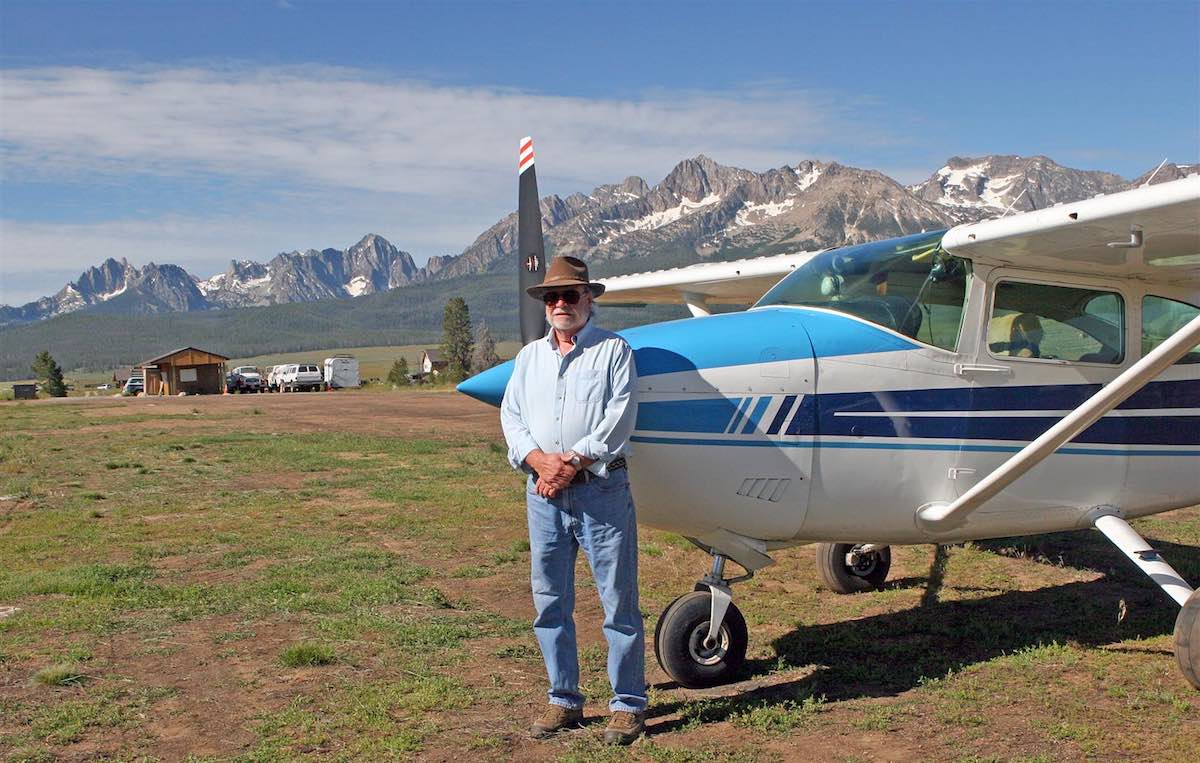
They say every airplane is a compromise, and perhaps no airplane makes more compromises—while also delivering more capabilities—than the Cessna 182 Skylane. How do you measure a great airplane? Fuel efficiency? Speed? Useful load? Short-field capability? The list of qualities you might want in an airplane goes on and on. And the Cessna 182 Skylane probably comes out on top on exactly none of them. Yet the Skylane does so many things so reasonably well that it remains one of the most popular [Click to read more…]


